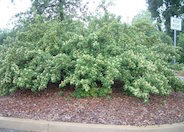
Common name:Red Clusterberry Cotoneaster
Botanical name:Cotoneaster lacteus
This is an evergreen shrub that grows to a size of 6-8' tall with long, arching branches. Cotoneaster exhibits dark green leaves above and gray beneath with dusky red fruit. It requires sun to part shade. Valuable for red berries and whitle flowers. This plant is tough enough to naturalize in many areas in CA, and should be considered potentially invasive.
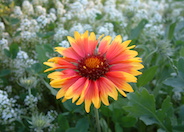
Common name:Gaillardia
Botanical name:Gaillardia pulchella
Flowers of this plant are 3-4" across, with orange petals edged in yellow that frame a rust-colored center. This plant thrives in full sun and needs good drainage. It blooms from June until frost.
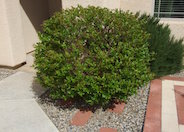
Common name:California Coffeeberry
Botanical name:Rhamnus californica
The California coffeeberry is an evergreen shrub that reaches 6'-8' high. It grows inland and has large green to black berries in late summer. This shrub tolerates sun or partial shade in all soil types. The California coffeeberry is a native to California and is drought tolerant. It is a beneficial insect plant and attracts butterflies. -Cornflower Farms
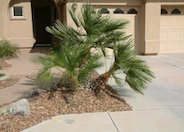
Common name:European or Mediterranean Fan Palm
Botanical name:Chamaerops humilis
Slow growing multitrunked palm good for small areas and containers. Full sun or partial shade. Leaves have sharp spines. Native to Mediterranean and Africa.
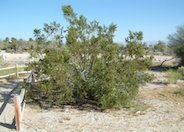
Common name:Creosote Bush
Botanical name:Larrea tridentata
Open, angular evergreen shrub grows to 6'x 6'. Dark green, foliage is fragrant after a rain. One of the most abundant plants in the southwest desert. Extremely drought tolerant. Good informal screen. Native to North American deserts.
| Designer: David A. Grant | Patio Garden LC 10 |
Photographer: GardenSoft |
Soils and Compost:
Physical weed control, including mulching, or hand removal protects the watershed from harmful chemicals.
Water Saving Tip:
As the weather gets hotter avoid the temptation to increase run times.
Instead, schedule more start times with one to two hours in between to allow the water from the previous session to soak in before watering again.
Integrated Pest Management:
Attract, or buy beneficial insects such as ladybugs and lacewings to control pest outbreaks in your garden.
